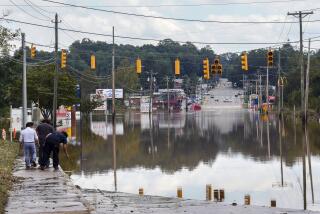‘I think he’s barbecuing’: A helicopter view of the Texas flood with the California National Guard
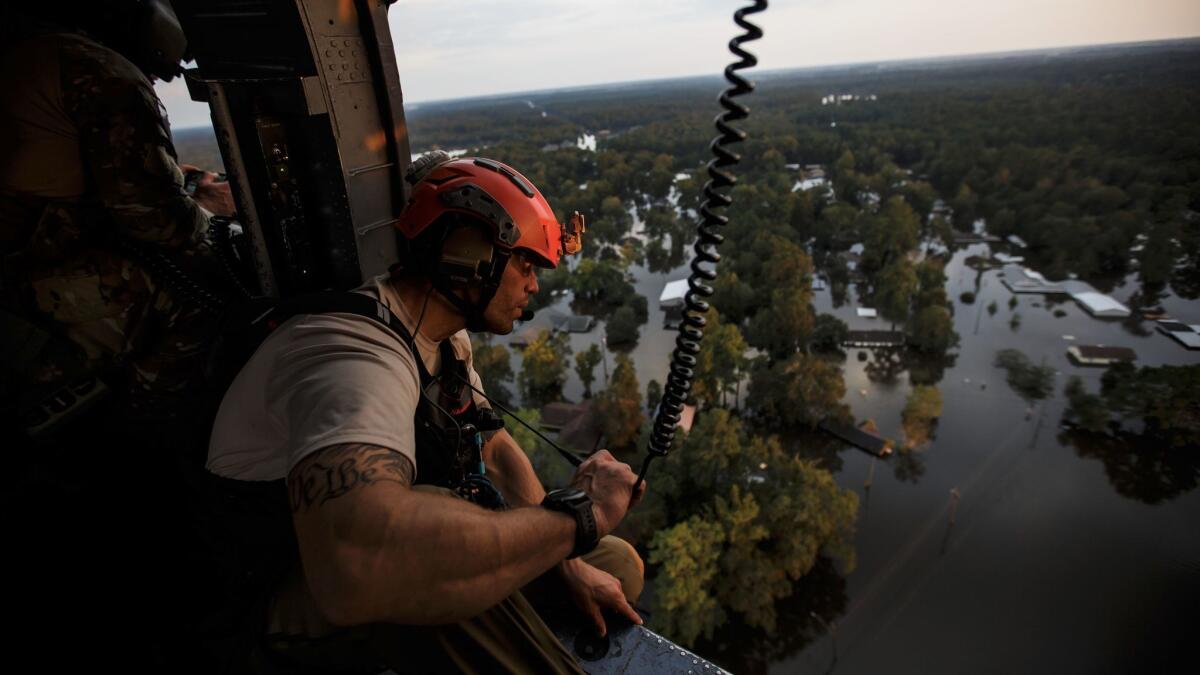
- Share via
Reporting from Beaumont, Texas — The HH-60G Pave Hawk helicopter skimmed a few hundred feet over the trees, patrolling for targets.
The crew of six scanned the trees and buildings below for anything resembling the human form. Except this wasn’t Baghdad or Kabul. It was East Texas.
“We got a mission,” one of the crew members radioed. “It’s a woman and a child that needs pickup.”
Across this blue-collar refinery town, a buzzing sound has filled the air in the days since floods from Tropical Storm Harvey rampaged across the coastal plains of southeast Texas.
At Jack Brooks Regional Airport, the tarmac was filled with a fleet of aircraft on missions of mercy, including C-130 military transport planes, medical helicopters, a CH-47 Chinook and several other military helicopters.
A crew with the 129th Rescue Wing of the California Air National Guard based out of San Jose was conducting search and rescue missions Thursday in flood-inundated areas that were difficult to reach by car or even boat.
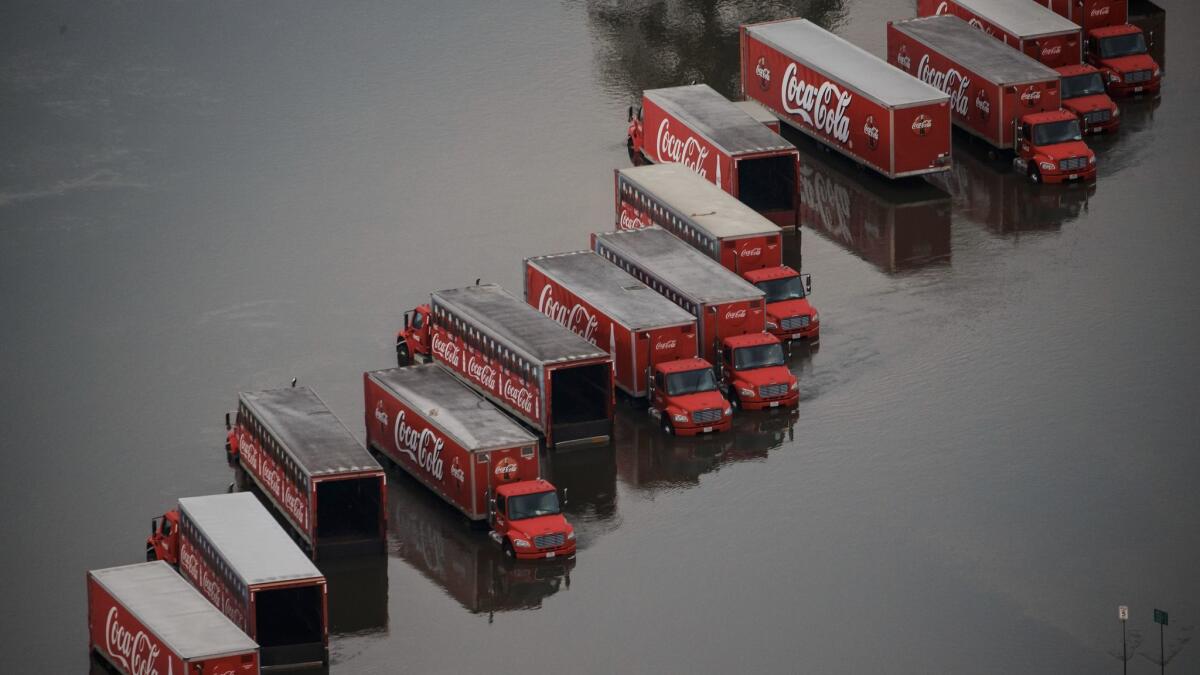
The extent of the flood’s destruction was apparent not long after takeoff. Lt. Col Thomas Keegan, the mission leader and the director of public affairs, and Maj. Drew Turner sat in pilot seats in the front; Staff Sgt. Tom Ryan and Tech Sgt. Sage Savage sat in gunner’s windows in the middle of the chopper; and Master Sgt. Adam Vanhaaster and Senior Airman George McKenzie sat with their legs dangling out of open doors in the back.
Below them: A partially flooded graveyard. Warehouses that were mostly under water. An RV dealership with dozens of half-drowned motor homes. A fleet of Coca-Cola delivery trucks with water up to their wheels. A horse standing forlornly in the middle of a flooded pasture. Columns of trucks fording lagoons where roads used to be, leaving contrails in their wake.
And ruined houses everywhere.
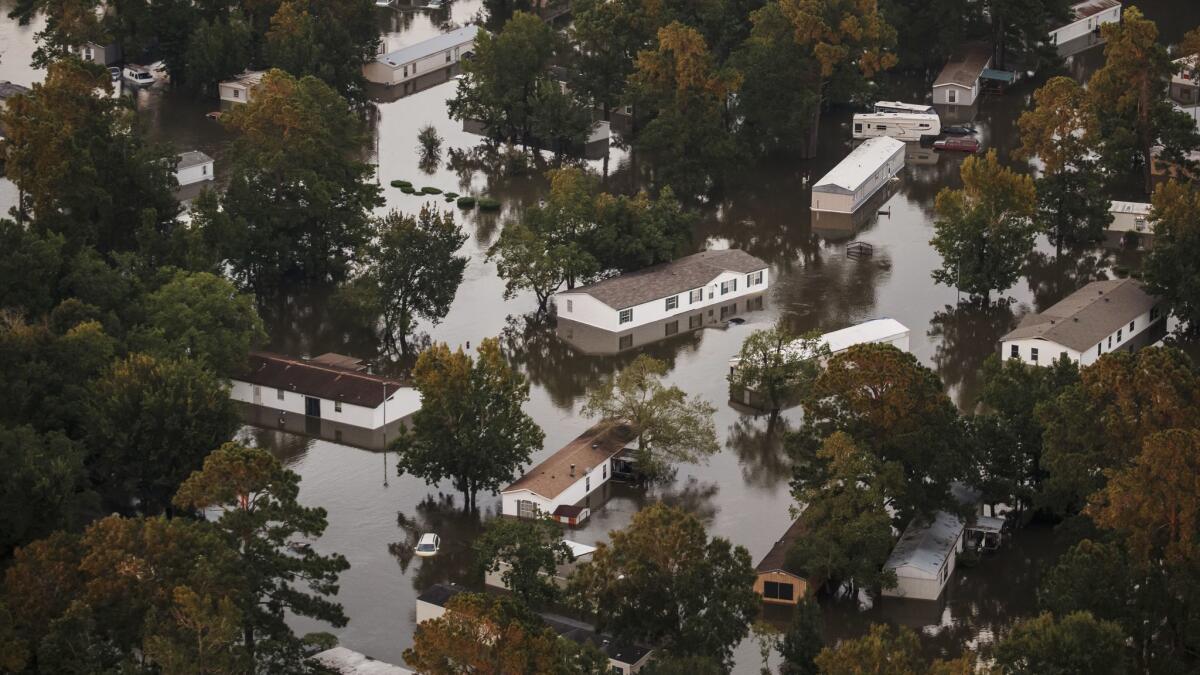
The chopper motored toward an address in the city of Orange, on the border with Louisiana. As the crew circled a neighborhood below, a woman emerged from a house and waved a red towel.
“We don’t have a way to communicate with them, other than with hand and arm signal,” Keegan explained later. “The hard part is figuring out who we’re supposed to pick up. ... We’ll get, like, a street address and a patient status” -- someone who has called 911 -- and then it’s the crew’s job to find that person once they’re on the ground and evaluate where they need to go.”
In this case, residents had called their local emergency management system for help, which relayed the request to the military. The helicopter circled until the crew found an open space nearby to land -- an elaborate operation in itself, which required avoiding trees and power lines.
A crowd gathered from the nearby houses as the helicopter set down in a grassy field and two rescuers in orange helmets hopped out to find who needed help.
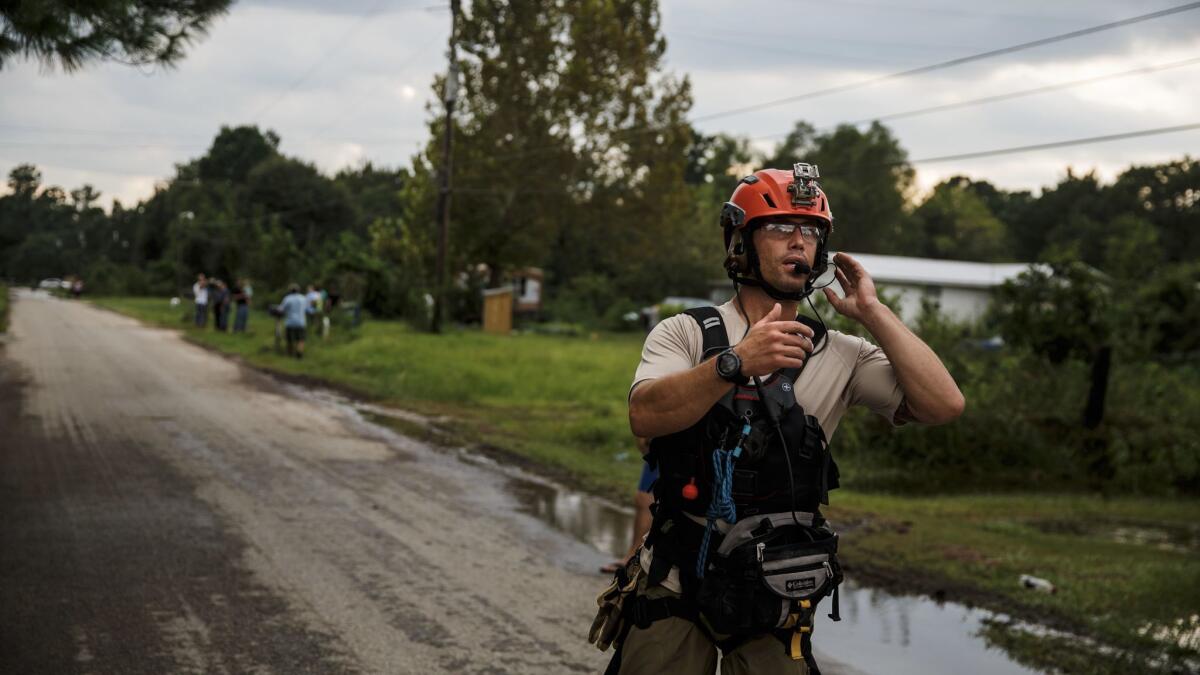
Soon, a woman and her son appeared on the dirt road. “I had a double lung transplant,” she explained. “I have cystic fibrosis.” With the floods, she said, her family felt it was not safe for her to wait it out in the partially flooded but hard-to-access neighborhood.
The other patient for pickup arrived not long after: a 9-month-old boy with a heart condition who had been using an oxygen tank to breathe. His parents nervously brought him to the helicopter crew in a baby carrier. As more than two dozen neighbors watched, the crew moved quickly, loading the two families onto the helicopter.
As it took off, the baby’s father fanned the child with a hat in the stifling heat. The woman with cystic fibrosis and her young son, meanwhile, looked nervous being on a helicopter; they barely looked up from the floor of the cabin at the watery scenery outside.
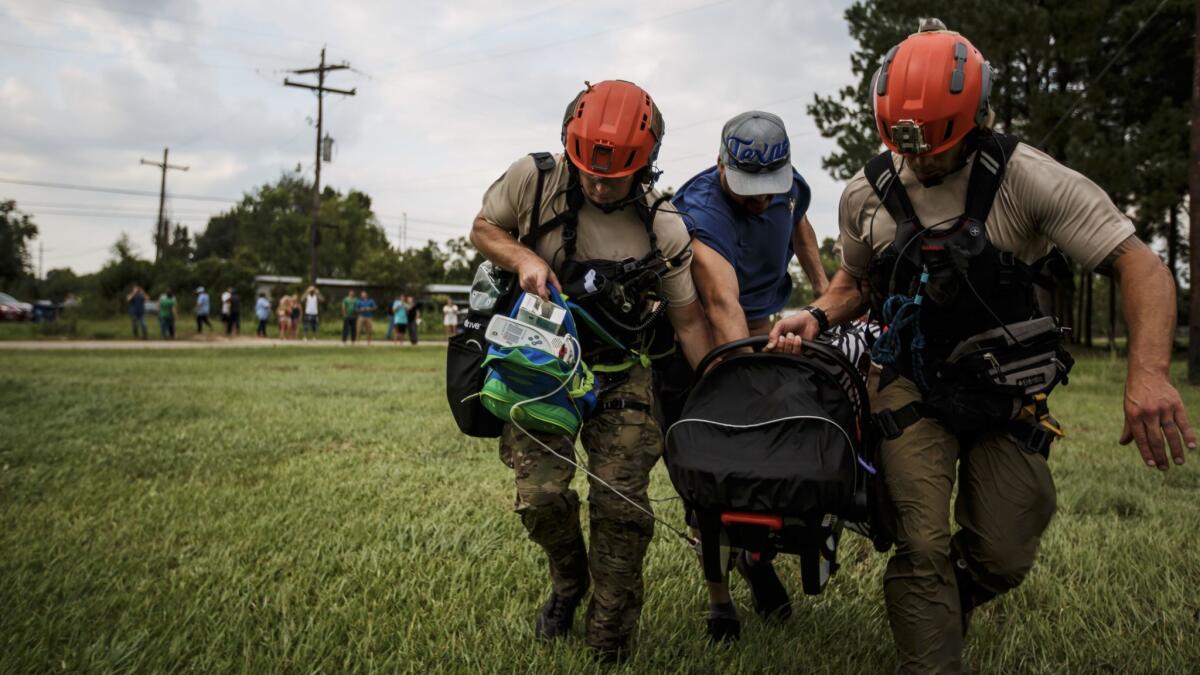
The trip was uneventful. After the pilot dropped off both families in Beaumont, the crew congratulated each other on the radio: “A baby counts for two.”
“Great job, fellas.”
Next mission: Recon.
In the setting sun, a haze clung to the trees that stretched out everywhere. Beneath their canopies, water often lurked beneath, and the disembodied chatter of the crew narrated the unusual landscape as they scanned the flooded area around Lumberton, which had been hit especially hard.
“Just a couch floating.”
“Wow, that’s up to the rooftop.”
One thing missing was any sign of people.
“What about the next town?”
“I got a bunch of houses here at 9 o’clock,” meaning to the left.
The chopper came across two military armored personnel carriers that had been turned into water ferries to push through the floodwaters to reach an isolated group of homes and pick up stranded residents. Separate teams of rescuers had also pulled up to the house in boats.
The chopper headed onward until it spotted and circled curiously around a railroad track in the woods that was mostly flooded. Several people were sitting on it as the water rushed underneath. The crew began barking reports to each other as the chopper made loops to see if those below had been trapped by advancing floodwaters.
Then doubt grew.
“Looks like they are just having a beverage and hanging out.”
“Stupid place to hang out.”
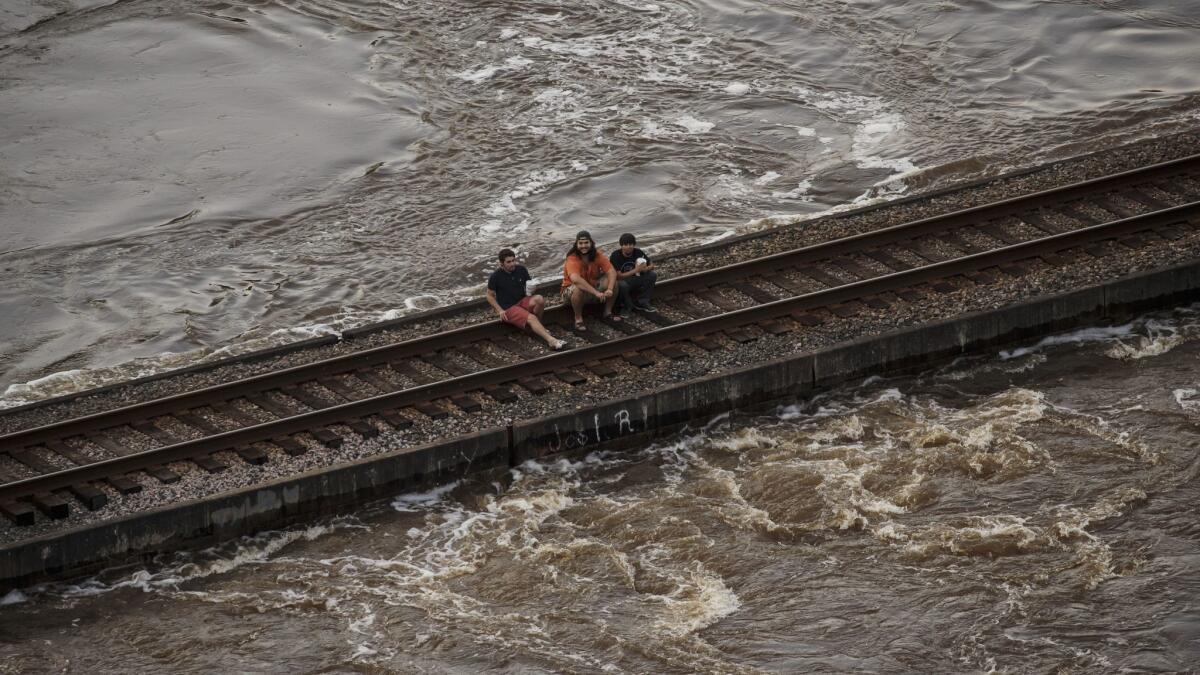
Not satisfied, the chopper pilot scouted a little, spotting a nearby portion of the tracks nearby that had been overtopped by floodwaters. Then he steered back to the people who had been sitting on the tracks.
“They’re walking and giving a thumbs-up. Taking pictures of us.”
“Pretty stupid,” one crew member responded. “But it is pretty down there.”
Even from the ground, the spot must have afforded a great view of the flood. It certainly did from the air.
A dim square appeared nearby, just beneath the surface of the water: the roof of a submerged car. Eight horses stood tightly together in the middle of a flooded field, their owner nowhere in sight. Two cows were loose and stood in a flooded road. The chopper moved over some newly developed land.
“These are brand-new houses. That sucks.”
Then came the strangest sight.
A two-story home sat surrounded by water, with a white horse standing in chest-deep floodwaters, as a man stood on a second-story deck. The helicopter paused to hover overhead.
“He’s pretty much surrounded.”
And yet...
“He’s giving a thumbs-up and taking a picture.”
“I think he’s barbecuing.”
A pause.
“I don’t know what his plan is.”
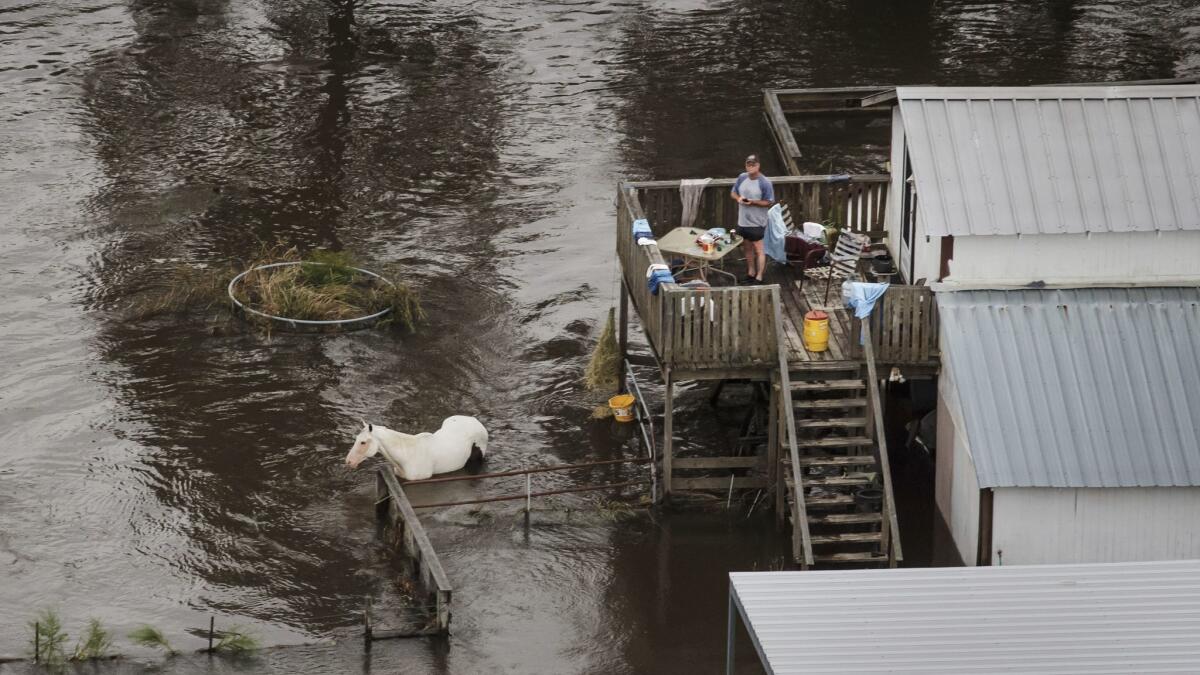
The rescuers moved on. The setting sun turned into a coin of red fire on the horizon. Time to refuel.
A large fuel plane flew into the area and both the Pave Hawk and a second California Air National Guard helicopter conducting search and rescue work pulled up behind it.
Two hoses with funnels at the end began extending from out the back of the large plane. The helicopters, which had long refueling rods attached to their noses, carefully pulled up behind the hoses and, in mid-air, inserted the refueling rods into the funnels -- an amazing operation to take place over an American city.
The crew wasn’t done. They pulled out night-vision binoculars that made the pitch-black landscape below glow in a bright and clear green. It was time to keep going.
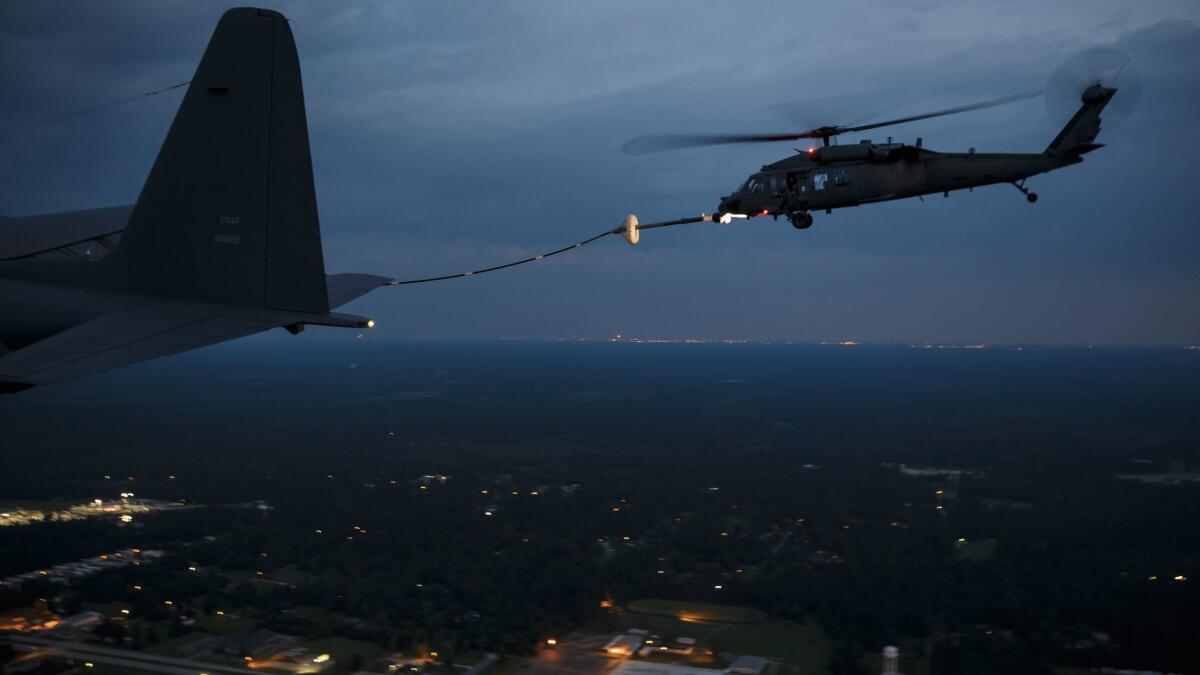
Matt Pearce is a national reporter for The Times. Follow him on Twitter at @mattdpearce.
ALSO
Harvey is likely to be the second-most costly natural disaster in U.S. history
Texas residents sort through wreckage left by Harvey as death toll reaches at least 46
Harvey has knocked out a significant portion of the nation’s oil refining capacity
More to Read
Sign up for Essential California
The most important California stories and recommendations in your inbox every morning.
You may occasionally receive promotional content from the Los Angeles Times.

